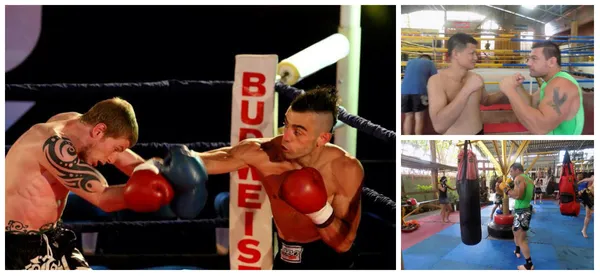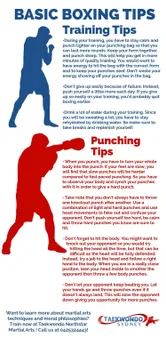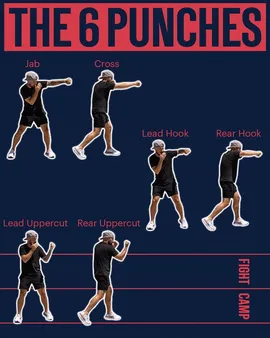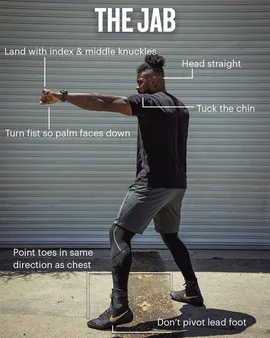Table of Contents
Embark on an exciting journey into the world of boxing, a sport that combines physical prowess, mental agility, and strategic thinking. Whether you're a fitness enthusiast seeking a new challenge or an aspiring boxer aiming for the ring, mastering the basics is essential. This comprehensive guide will equip you with the fundamental skills and techniques to kickstart your boxing adventure.
How to Learn the Basic Boxing Skills and Techniques: A Comprehensive Guide
I. Boxing Basics: Mastering the Fundamental Skills
Boxing Basics: Mastering the Fundamental Skills
To begin your boxing journey, you'll need to establish a solid foundation of fundamental skills. The stance is crucial, providing balance and stability. For beginners, the Traditional or "Square-Up" stance offers good coverage and a firm base.
- Stand with your feet shoulder-width apart, toes slightly turned out.
- Keep your knees slightly bent and your weight evenly distributed.
- Hold your arms up in front of you, elbows tucked in, and fists clenched.
Next, focus on proper footwork. The basic boxing footwork involves shifting your weight and moving your feet quickly to maintain balance and positioning. Learn how to move forward, backward, to the sides, and circle your opponent while staying in a balanced stance.
Footwork Technique | Description |
|---|---|
Advancing | Move forward, keeping your weight on your front foot. |
Retreating | Move backward, keeping your weight on your rear foot. |
Side-Stepping | Move laterally, keeping your stance and balance. |
Circling | Move around your opponent in a circular pattern. |
Pivot | Turn your body on the balls of your feet to change direction. |
Punches are essential tools in the art of boxing. Master the Jab, Cross, Hook, and Uppercut:
- Jab: A straight punch thrown with the lead hand, used to control distance and set up other punches.
- Cross: A powerful straight punch thrown with the rear hand, often used after a jab to deliver a knockout blow.
- Hook: A short, looping punch thrown with the lead hand, often used to attack the opponent's body or head.
- Uppercut: A powerful punch thrown with the rear hand, rising from below and targeting the opponent's chin or solar plexus.
Practice these punches in front of a mirror, then work with a partner to get a feel for their form and impact. Remember, technique is key; focus on accuracy and proper form rather than just power.
II. Formwork and Footwork: The Foundation of Boxing
Formwork and Footwork: The Foundation of Boxing
The Importance of Stance
- Sets the foundation for all boxing techniques.
- Maintains balance and mobility in the ring.
- Generate power and speed for punches.
To master the stance, visualize a straight line connecting your shoulders and feet. Keep your knees slightly bent and your weight evenly distributed. Your feet should be shoulder-width apart with the front foot slightly turned out. This provides a stable base for movement and defense. Remember, your stance should be relaxed yet ready to spring into action.
How to Find the Best Boxing Gym and Trainer
Footwork: The Art of Movement
- Allows you to control the pace and distance of the fight.
- Evasive footwork helps you avoid punches.
- Footwork can set up powerful attacks.
Effective footwork involves quick and smooth steps. Master the basic steps: the forward step, backstep, side step, and pivot. Each step has its purpose, from closing the gap to evading punches. Practice footwork drills to develop agility and coordination. Learn to move in different directions and change directions quickly. Remember, footwork is the key to staying in control and out of harm's way.
Combining Stance and Footwork
Stance | Footwork | Benefits |
|---|---|---|
Square Stance | Forward Step | Power and stability |
Southpaw Stance | Backstep | Evasion and counter-punching |
Crouching Stance | Side Step | Defense and agility |
Combine stance and footwork to create a cohesive style. For instance, the square stance with a forward step is ideal for power punches. The southpaw stance with a backstep is excellent for evading jabs. Experiment with different combinations to find what works best for you.
How to Learn the Basic Boxing Skills and Techniques
III. Striking Techniques: Jabs, Crosses, and Hooks
Striking Techniques: Jabs, Crosses, and Hooks
In the realm of boxing, mastering the trio of jabs, crosses, and hooks can elevate your prowess as a fighter. Let's delve into each of these fundamental punches and understand their significance in the art of boxing.
- Jab: The jab is a quick, straight punch delivered with your lead hand. Its primary purpose is to establish your range, keep your opponent at bay, and set up more powerful strikes.
- Cross: The cross, also known as the straight right, is a powerful, straight punch thrown with your rear hand. It's a devastating weapon when executed with proper technique and timing.
- Hook: The hook is a short, looping punch thrown with either your lead or rear hand. It's designed to strike your opponent on the side of the head or body, often resulting in a knockout if landed cleanly.
Proficiently combining these three punches is essential in boxing. The jab acts as a foundation, controlling the distance and setting up the cross and hook. The cross, with its raw power, can be a fight-ender when timed correctly. The hook, with its wide arc and ability to bypass an opponent's guard, is a versatile weapon that can target vital areas.
Mastering these fundamental punches is a journey that requires dedication, practice, and technical refinement. As you improve your skills, you'll not only enhance your ability to strike your opponent but also bolster your defense and overall ring generalshiphip.
Punch | Type | Execution | Target |
|---|---|---|---|
Jab | Straight | With lead hand, from shoulder | Opponent's face or body |
Cross | Straight | With rear hand, from shoulder | Opponent's face |
Hook | Looping | With lead or rear hand, from elbow | Opponent's head or body |
Jabs, crosses, and hooks are integral components of a boxer's arsenal. By diligently practicing and refining these techniques, you'll elevate your boxing prowess and significantly increase your chances of victory in the ring.
Check out our other guides on Gymnastics, training like a gymnast, and gymnastics books and podcasts for more informative content!
IV. Mastering Defense and Evasion
Mastering Defense and Evasion
In the world of boxing, the ability to master defense and evasion techniques is pivotal. As the old adage goes, "The best form of defense is to not get hit." This section will delve into the intricacies of avoiding your opponent's strikes, countering their attacks, and moving gracefully around the ring. By honing these skills, you will become a formidable opponent who can effectively nullify your adversary's offensive strategies.
One fundamental aspect of defense in boxing is blocking. This involves using your gloves and arms to physically obstruct your opponent's punches. The core blocks to master include the high guard, the low guard, and the shoulder roll. The high guard protects your head and face, the low guard shields your body, and the shoulder roll allows you to deflect punches by rotating your shoulder.
Beyond blocking, dodging and slipping are techniques that allow you to evade punches altogether. Dodging involves moving your head and body away from the incoming strike, while slipping involves moving your head and upper body to one side, causing the punch to miss. These maneuvers require quick reflexes, footwork, and the ability to anticipate your opponent's movements.
When an opponent's strike lands, it is essential to know how to counter it. Counters are punches that are thrown immediately after blocking or evading an attack. By timing your counterattacks precisely, you can capitalize on your opponent's momentum and land effective strikes of your own. Common counters include the straight right, the left hook, and the uppercut.
Finally, maintaining a strong sense of ring generalship is paramount for effective defense. This involves controlling the pace and distance of the fight, as well as using footwork to move around the ring and cut off your opponent's angles. By mastering these tactical elements, you can dictate the terms of the fight and make it difficult for your opponent to land clean punches.
Essential Tips for Mastering Defense and Evasion in Boxing
- Focus on perfecting your fundamental blocks, dodges, and slips.
- Develop quick reflexes and footwork to evade punches efficiently.
- Learn to counter your opponent's strikes with well-timed punches.
- Maintain a strong sense of ring generalship to control the pace and distance of the fight.
- Practice these techniques regularly during training to develop muscle memory.
Move | Description |
High Guard | Gloves raised to protect the head and face |
Low Guard | Elbows tucked in, gloves protect the body |
Shoulder Roll | Rotating the shoulder to deflect punches |
Slip | Moving the head and upper body to evade a punch |
Dodge | Moving the head and body away from a punch |
Mastering defense and evasion in boxing is a skill that requires dedication, practice, and a deep understanding of the sport. By consistently refining these techniques, you can elevate your overall performance as a boxer and become a formidable opponent in the ring.
To further enhance your understanding of defensive and evasive boxing techniques, we recommend checking out our related articles on How to Improve Your Boxing Footwork and Movement and The Best Boxing Defense Techniques and Strategies. These resources provide in-depth guidance and insights to help you excel in your boxing journey.
V. Boxing Training Plan
Boxing Training Plan
To achieve your boxing goals, a well-structured training plan is essential. Here's a comprehensive guide to help you create a personalized boxing training plan:
- Set Clear Goals: Define your specific boxing goals, whether it's improving fitness, competing in tournaments, or learning self-defense.
- Assess Your Current Fitness Level: Evaluate your current fitness level to determine your starting point and areas for improvement.
1. Warm-Up (5-10 minutes):
- Light cardio, such as jogging or jumping jacks, to elevate your heart rate.
- Dynamic stretches for your legs, arms, and core to prepare your muscles for boxing.
2. Boxing Technique Drills (15-20 minutes):
- Practice basic punches (jab, cross, hook, uppercut) in front of a mirror to refine your technique.
- Work on footwork drills, including shuffling, pivoting, and slipping, to improve your mobility.
3. Shadowboxing (10-15 minutes):
- Perform shadowboxing drills, imagining an opponent, to enhance your coordination and timing.
- Focus on maintaining proper form and transitioning smoothly between punches.
4. Heavy Bag Work (15-20 minutes):
- Use a heavy bag to practice your punches with power and accuracy.
- Work on combinations, varying your punches and targeting different areas of the bag.
5. Speed Bag Work (10-15 minutes):
- Train with a speed bag to improve your hand-eye coordination and reaction time.
- Focus on maintaining a steady rhythm and keeping your punches crisp.
6. Partner Drills (15-20 minutes):
- Work with a partner to practice defensive techniques, such as blocking, dodging, and countering.
- Engage in light sparring sessions to apply your skills in a controlled environment.
7. Strength and Conditioning (2-3 days per week):
- Incorporate strength training exercises to build muscle and improve punching power.
- Include cardiovascular exercises to enhance your endurance and stamina.
8. Rest and Recovery:
- Allow your body adequate rest and recovery time to prevent overtraining and injuries.
- Prioritize a balanced diet and sufficient sleep to support your training efforts.
9. Monitor Progress and Adjust:
- Keep a training log to track your progress and identify areas for improvement.
- Adjust your training plan as needed to challenge yourself and continue making progress.
Remember, consistency and dedication are key to achieving your boxing goals. Stay focused, work hard, and enjoy the journey of becoming a better boxer.
To further enhance your boxing training, consider these additional tips:
- Find a Qualified Boxing Coach: Working with an experienced coach can help you refine your technique, develop strategies, and stay motivated.
- Join a Boxing Gym: Joining a boxing gym provides access to training equipment, sparring partners, and a supportive community.
- Stay Hydrated: Drink plenty of water before, during, and after your workouts to stay hydrated and energized.
- Listen to Your Body: Pay attention to your body's signals and take rest days when needed to prevent burnout and injuries.
- Have Fun: Remember to enjoy the process of learning and practicing boxing. The journey is as important as the destination.
By following these guidelines and incorporating the tips provided, you can create a comprehensive boxing training plan that will help you achieve your goals and become a skilled and confident boxer.
Related Posts:
- How to Learn the Basic Boxing Skills and Techniques
- The Benefits of Boxing for Physical and Mental Health
- The Best Boxing Equipment and Gear
VI. Conclusion
As you embark on your boxing journey, remember that practice and dedication are key to mastering the art. Embrace the challenges, learn from your mistakes, and never give up. With perseverance and determination, you'll witness remarkable progress in your boxing skills and overall fitness. Whether you aspire to compete in the ring or simply seek a challenging and rewarding workout, boxing offers a path to self-improvement and empowerment. So, lace up your gloves, step into the ring, and let your fighting spirit shine through.